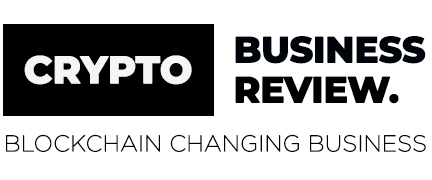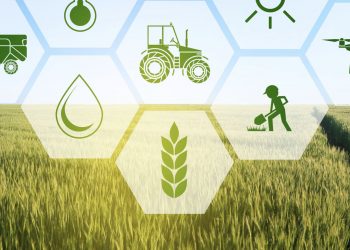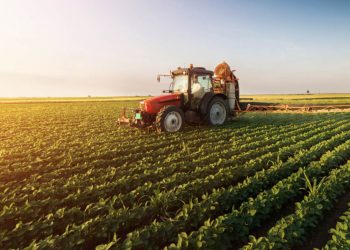1.4 billion tons of perishable food is wasted due to inefficiencies found with the food supply chain. Using blockchain in the food chain has the potential to improve traceability of the supply chain, minimise tampering of data, remove duplication in data entry and ensure the process is automated where feasible through the use of smart contracts. All of this contributes to surfacing information across the participants in a supply chain which could inform greater visibility of risks and handling of process such as product recalls and inventory management.
How can blockchain technology help improve the food industry?
A shared digital food supply chain powered by blockchain helps supply chain players better collaborate with each other to operate more efficiently and adapt to change:
Working smarter across a shared ecosystem
Easily identify process inefficiencies, eliminate bottlenecks and optimize your supply chain for continuous growth.
Real-time demand forecasting
All food system participants can now know the provenance, realtime location and status of their food products. Armed with better data, companies can develop more accurate supply and demand forecasting models, localize the sourcing of ingredients and restructure contracts.
Scalability
Automated processes and end-to-end synchronization can create efficiencies at every step.
Within the food supply chain there are different participants involved in each step, from farmers, to processors, manufacturers, certifying agencies, government agencies, logistics, distributors, retailers and so on. Each of these participants shares critical information about the product that sits in their own local server. This information is not accessible to other participants and thus, there is an increased chance of food fraud in the system.
If a consumer wants to buy organic tomato ketchup, they rely on the label claim. The manufacturer of ketchup relies on the supplier of tomato puree or concentrate processor. The tomato processor relies on the claim/organic certification furnished by the farmer or farmer association. If any of the participants provide a false claim, both the consumers and other participants are cheated.
Blockchain provides a secure environment where each of the participants in the blockchain network has access to each data and these data, once entered and verified, cannot be modified. For example, a farmer that provides an organic food certificate, which is verified by an authorised agency, cannot have that certificate tampered with at later date.
Information or data provided by each participant referred to as a transaction forms a block. This block is verified by thousands, perhaps millions, of computers distributed around the blockchain network. The verified block is added to a chain, which is stored as multiple copies across the net. This creates a unique record with a unique history. Modifying a single record would mean modifying the entire chain and in millions of computers (nodes), which is practically impossible.
Blockchain, when integrated with the latest technologies for data capturing, has huge potential in the food industry. Building on the respective strengths of blockchain and the Internet of Things (IoT), we can revolutionise the food industry. IoT solutions link the physical and digital worlds, capturing data like temperature and humidity during transportation or storage of product. Blockchain provides a secure and an immutable platform where this data can be stored and accessed by every participant in the supply chain.
In its latest report, ‘Key Vertical Opportunities, Trends & Challenges 2019-2030’, Juniper Research shows that blockchain used with IoT sensors and trackers will have several advantages. These are:
- It will streamline the supply chain, reducing retailers’ costs
- It offers simpler regulatory compliance
- It will enhance and expedite the food recall process
- It will enable $31 billion in food fraud savings globally by 2024
According to the 2018 policy paper by the Food and Agriculture Organization of the United Nations (FAO), blockchain could dramatically transform the food supply chain in India. As per the policy paper, blockchain technologies can help in building an immutable contract between the various players in supply chain, enabling further transparency in the system.
A smart contract can reduce the number of intermediaries in the supply chain network. These smart contracts can reduce transaction costs, improve margins and increase efficiency, and as a result, transfer a large chunk of profits to the farmer/producer.
There are already many companies who are experimenting with this new technology and these trials will further build the capabilities of the blockchain technology and make it economically viable also to be accepted by the majority of food processors in coming years. In order to bring this technology to the mainstream of the processed food world, food processors, supply chain participants, government authorities, and IT experts have to come together to build a comprehensive plan to implement Blockchain Technology.
Food Safety
The blockchain used to monitor supply chain transactions also has the potential to dramatically improve food safety, a serious issue in much of the developing world. A late 2015 report from the World Health Organization (WHO) estimates that every year 1 in 10 people fall ill from eating contaminated foods. The effects of food safety challenges are particularly acute in the young, with over 125,000 children estimated to die annually from unsafe foods. Blockchain stands to reduce these unfortunate and preventble incidents in three ways: 1.) by providing consumers with transparency that the foods they are eating match the ingredients on the label; 2.) by capturing any event in which the food may be tampered with at any point in the supply chain, and 3.) by enabling retailers to pull potentially hazardous foodstuffs from shelves given any incident.
Payments
Blockchain stands to transform payments in the food industry. Food producers, many of whom sell their items at commodity rates, would be able to demonstrate proof of sale instantly using blockchain technology. Similarly, food distributors would be able to make payments to producers with greater ease and trust. Blockchain technology also has the potential to cut out middlemen and lower transaction fees, another promising development for small- or medium-sized food producers.
What’s standing in the way of driving new food chain efficiencies?
Legacy supply chains slow companies down
Though some large retailers are deploying new technologies like blockchain to create automated and intelligent supply chains, most companies are bogged down in manual paper-based processes that make it difficult and time-consuming to identify issues and manage inventory.
Slow adoption of digital supply chain tools keeps companies in the dark
Even though visibility and transparency will be key to their success over the next 10 years, companies have been slow to adopt digital tools that could enable better supply and demand matching and identify waste hot spots.
Poor coordination across the food chain network creates waste
Irregularities in the global food system make hand-offs far from seamless. Enabling a system that tracks product
loss, waste and expiration dates could save $150 billion annually in food waste.
Like most technologies, blockchain can be an enabler. Trust in blockchains should be considered on a case by case basis. The decision should go back to first principles as how you would take any decision on any new system development driven by factors such as the use of standards, understanding of user needs and interoperability.
“People want to know, quite rightly, where ingredients they give to their baby have come from. We wanted a product in which trust meant something.”
Chris Tyas, Global Head of Supply Chain, Nestlé
References
- Innovation News Network: www.innovationnewsnetwork.com
- True Interaction: www.trueinteraction.com
- New Food Magazine: www.newfoodmagazine.com
- IBM Blockchain Solutions: www.ibm.com/blockchain






